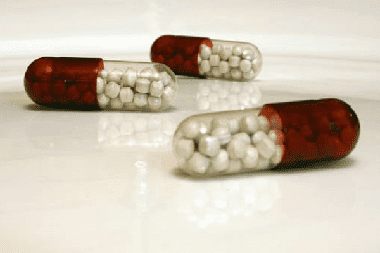Enzymes >>>> Enzyme activity in the presence of vitamins and minerals
Enzyme activity in the presence of vitamins and minerals.

The catalytic activity of enzymes (and hence efficiency) is greatly influenced by the so-called non-protein cofactors: organic compounds (coenzymes) and substances of inorganic origin (trace elements). Vitamins are the precursors of many coenzymes . The content of coenzymes, vitamins or microelements in the body is insignificant (calculated in milligrams), but their role in biochemical processes is great. The lack of these components disrupts the enzymatic activity, which in turn leads to serious changes in the metabolic processes of carbohydrates, fats and proteins.
The human need for vitamins and microelements is small, therefore they are called microcomponents. In contrast, macrocomponents - carbohydrates, fats and proteins - should be included in the human diet in large quantities, since the daily requirement for these components is calculated in hundreds of grams. This is due to the fact that the main nutrients are used in the body as energy sources, raw materials for the production of organic precursors of cell components and for the biosynthesis of proteins. Vitamins and trace elements are needed as catalysts in chemical reactions for the transformation of macrocomponents into useful substances. Actually, this is the essence of metabolism.
It was found that it is the water-soluble vitamins that perform certain functions as coenzymes:
- Thiamin (vitamin B1) is present in animal tissues as a cofactor - thiamine pyrophosphate. It plays the role of an intermolecular carrier of various chemical groups. For example, it is involved in the fermentation of glucose into alcohol by the action of yeast.
- Riboflavin (vitamin B2) is a part of two coenzymes flavin mononucleotide (FMN) and flavin adenine dinucleotide (FAD), serves as an intermediate carrier of hydrogen atoms and participates in oxidation reactions.
- Nicotinamide (nicotinic acid) is a component of two coenzymes, nicotinamide adenine dinucleotide (NAD) and nicotinamide adenine dinucleotide phosphate (NADP), which is a carrier of hydride ion in the oxidation of carbohydrates and fatty acids.
- Pantothenic acid (vitamin B3) is found in all tissues of animals, plants and microorganisms; it is a component of coenzyme A (acetylation coenzyme). It is a carrier of the acetyl group involved in the breakdown of carbohydrates and fatty acids under aerobic conditions (with oxygen access).
Pyridoxine (vitamin B6) consists of interconvertible compounds: pyridoxine, pyridoxal, pyridoxamine. Serves as a carrier of amino groups and is involved in the production of glutamic acid.
- Biotin is a growth factor; as a coenzyme, it participates in carboxylation reactions and the production of oxaloacetate.
- Folic acid itself does not have coenzyme activity, but is reduced in tissues to tetrahydrofolic acid, which is the active coenzyme.
- Vitamin B12 is not produced by plants or animals, only by some types of microorganisms, it has two coenzyme forms: 5-deoxyadenosylcobalamin and methylcobalamin, transfers hydrogen atoms and methyl groups.
- The biochemical function of ascorbic acid (vitamin C) is not fully understood. Presumably, it plays the role of a cofactor in the enzymatic hydroxylation reaction , in which proline residues in the collagen of vertebrate connective tissue are converted into hydroxyproline residues. This gives reason to assume that ascorbic acid is involved in the formation of the main component of the connective tissue of higher animals.
In addition to fat-soluble vitamins, most of the essential trace elements participate in biochemical processes in the form of cofactors , performing at least one of three functions: they themselves act as catalysts with the participation of an enzyme protein; form joint complexes with a substrate and an enzyme; metal ions play the role of an electron acceptor at certain stages of the process catalyzed by enzymes (such enzymes are called metalloenzymes).
- Iron is a participant in the transfer of hemoglobin and myoglobin proteins by the hemogroups, a participant in the transfer of electrons by the cytochrome protein.
- Copper is involved in the transfer of electrons, the acceptor of which is oxygen, and is present in reactions to form cross-links between collagen and elastin polypeptide chains. Lack of copper in the body will lead to the formation of defective collagen, which is not cross-linked, which in turn will make collagen and elastin, for example, in blood vessels less durable.
- Zinc ions are required for about a hundred reactions involving enzymes. It is a cofactor of dehydrogenase, DNA polymerase, carbonic anhydrase. The hormone insulin accumulates in the form of a complex with zinc.
- Manganese ions are needed by the arginase enzyme, which hydrolyzes argenine to form the final product - urea. Also, manganese ions are cofactors of some phosphate-carrying enzymes.
- Cobalt is an essential component of vitamin B12.
- Selenium is a cofactor of glutathione peroxidase, which, together with the peptide glutathione, protects cells from the damaging effects of hydrogen peroxide.
There are several other trace elements: vanadium, tin, chromium, silicon, the benefits of which are tangible, but their functions in biochemical processes have not been precisely established.

Read

Read



























